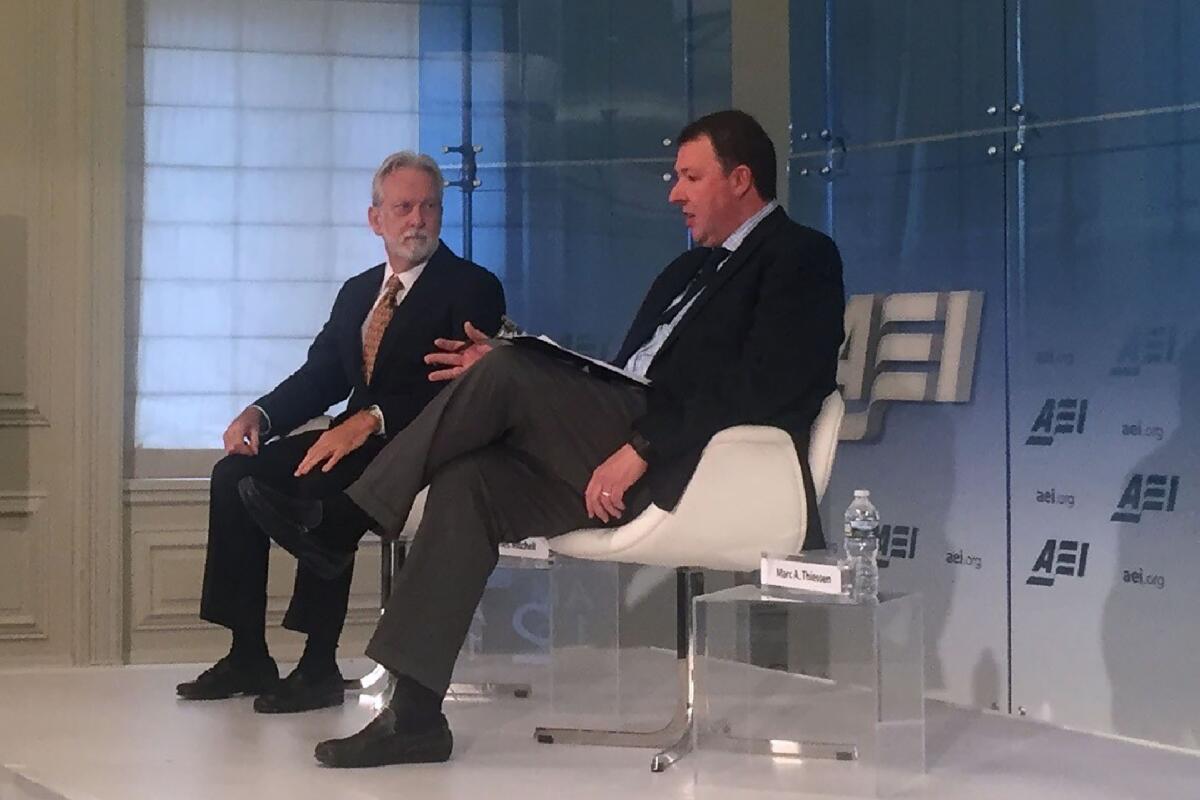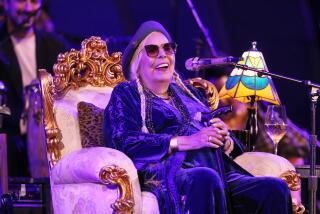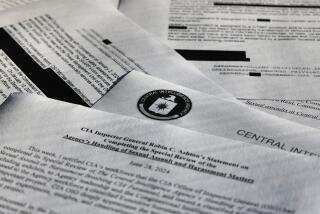Waterboarding of detainees was so gruesome that even CIA officials wept

GUANTANAMO BAY NAVAL BASE, Cuba — The architect of the Central Intelligence Agency’s post-9/11 interrogation program said Wednesday that the waterboarding technique he employed was so gruesome that people — including CIA officials — cried when they witnessed it.
James Mitchell testified at a pretrial hearing here in the case against Khalid Shaikh Mohammed, the confessed mastermind of the Sept. 11, 2001, attacks. Mohammed and four other defendants are charged with nearly 3,000 murders.
Mitchell and another psychologist, John “Bruce” Jessen, designed, oversaw and frequently participated in what the CIA termed enhanced interrogation techniques. Waterboarding, a simulated drowning, was one of them.
To employ the method, a prisoner would be strapped to a board placed on a modified gurney, tipped so that his head was near the ground. Under President George W. Bush, the Justice Department approved and issued guidelines for how to execute the method.
With guards steadying the gurney, Jessen would pour water onto a cloth Mitchell held over the prisoner’s mouth and nose. The water pour could last up to 20 seconds, then be paused, then another 20 seconds, paused, then 40 seconds. The subject feels as though he is drowning. Typically, the subject spasms, expels water and snot, , sometimes vomit, squirms and flops on the gurney as if having a seizure. The practice is nearly universally condemned as torture.
Mitchell used the technique on at least three men, including Mohammed. This week, he testified that he would do it again if he believed he had to, but also said that the results repulsed him.
The first person to be subjected to the method was Abu Zubaydah, an Al Qaeda functionary and the first so-called high-value detainee captured after 9/11. He was waterboarded 83 times over a handful of sessions in August 2002, according to an investigation by the Senate Select Committee on Intelligence.
After Abu Zubaydah started cooperating with interrogators at a secret prison in Thailand in 2002, Mitchell and Jessen sought to stop using the waterboard. Officers at CIA headquarters in Virginia accused the two of having lost their nerve.
“They said that we were pussies, that we had lost our spine,” Mitchell testified. The CIA officers said that if another attack by Al Qaeda occurred, Mitchell and Jessen “would have the blood of dead Americans on their hands.”
Mitchell told the officers he would continue only if they came and witnessed application of the waterboard, to “bring their rubber boots and come on down.” Which they did.
They assembled in Abu Zubaydah’s cell, which Mitchell described as small with an unpleasant, musky odor. The psychologists performed what Mitchell said was a dialed-back version of the technique. “I don’t want to use the word ‘perfunctory’ for something that horrible, but, yeah,” he said.
It didn’t seem perfunctory to the visitors, many of whom began to cry. “Their decision after witnessing this is that we don’t need to do this,” he said.
Mitchell has been a vigorous defender of the torture program.
His description of himself as playing a role to limit the use of the program is confounding, especially because he went on to waterboard two more men, including Mohammed, who was waterboarded 183 times. He testified that waterboarding was a step in a process; he urged the end of it for Abu Zubaydah because it had served its purpose. Abu Zubaydah was cooperating, he said, and might cease to cooperate if it were resumed.
He said his objections to specific harsh techniques weren’t limited to Thailand. He later attempted to stop what he regarded as rogue interrogation techniques at another so-called black site in Afghanistan, he said. He confronted an interrogator there and later reported him to CIA headquarters. “There are two kinds of people in the world, in my opinion,” Mitchell said. “There are those who ask permission and those who ask forgiveness. He was an ask-forgiveness kind of guy.”
The man was later withdrawn from the site.
Mitchell during two days of testimony has repeated several claims that his interrogation techniques produced actionable intelligence. Some of those claims are contradicted by other research. For example, he says that the interrogation of Abu Zubaydah helped the CIA locate Ramzi Binalshibh, one of Mohammed’s fellow defendants. Binalshibh is alleged to have been Mohammed’s chief subordinate in coordinating the 9/11 plot.
Binalshibh was captured in Karachi, Pakistan, in 2002 after he and Mohammed granted an interview to Al Jazeera reporter Yosri Fouda, who disclosed their location to his bosses. One of them in turn relayed the information to the CIA director at the time, George Tenet. The CIA and Pakistani security officials used the information and other tips on the ground to identify several possible apartments. They raided them that September. Mohammed was gone, but Bin Shibh was captured after an hours-long gun battle.
At another of the raided houses, they found two of Mohammed’s young sons, their father having fled just ahead of the raid. A Pakistani intelligence officer likened the scene to a western movie, in which the sheriff arrives just after the outlaw fled leaving the ashes of his campfire still warm.
Human rights advocates have repeatedly denounced the torture program as ineffective and brutal. Joseph Margulies, a law professor at Cornell University who once represented Abu Zubaydah, said the brutal methods helped numb America to wrongdoing.
“James Mitchell and Bruce Jessen conceived, designed and executed the first officially recognized torture program in U.S. history,” Margulies said in an email. “It is one thing that they are utterly unapologetic; that is a commentary on them. But it is something else altogether that so much of the rest of the country is utterly indifferent; that is a commentary on us. A wrong that escapes public condemnation is no wrong at all. Worse, it invites not simply repetition, but expansion. Yesterday, we tortured men in cages because we thought they had done something wrong; today, we torture children at the border knowing they have done no wrong at all.”
He added: “Do not be seduced by linguistic lightfootedness and ask whether this really is torture. I refuse to play that game. Instead, I encourage people to ask themselves this: Would you recoil in horror if you saw the same things done to a dog? If you saw a dog strapped to a board and nearly drowned, again and again, would it make you cringe and wince? Would you turn away and demand that it stop? If so, then it is torture, and we should call it what it is.”
The hearing was interrupted several times Wednesday when court security officers feared classified information was or was about to be revealed. They turned on a flashing red light — called the hockey light here — an action that also cuts the audio feed to the gallery, where reporters and visitors are seated. In at least one of the instances, the information thought to be classified — a CIA officer’s name — can be discovered in a simple Google search. Additionally, the name had been spoken in open court the day before.
In instances like these, veteran court watchers shrug and say: It’s Guantanamo.
Mitchell is scheduled to return to the stand Thursday.
McDermott is a special correspondent.
More to Read
Sign up for Essential California
The most important California stories and recommendations in your inbox every morning.
You may occasionally receive promotional content from the Los Angeles Times.










